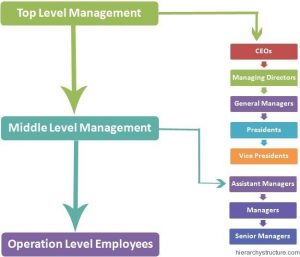As the U.S. continues opening up after the pandemic’s multiple waves, it’s likely that there will be surges in turnover even as many employers need more staff, not less. Research from Eagle Hill Consulting suggests that 25 percent of current employees are already planning to leave their jobs, and this percentage goes up for parents whose children are going to school remotely, and as high as 36 percent for Millennial employees.
Sadly, this makes sense. Remote schooling causes tremendous pressure and conflict for parents, and it’s widely acknowledged that employees are generally feeling burned out. It can seem like quitting or going somewhere new would solve all these problems, even though that’s often an inaccurate perception.
And there’s a double whammy: You can’t pick who might be planning to go. It’s as likely to be your star performer as it is the persistent whiner who barely accomplished anything. But “planning to leave” doesn’t have to mean gone. A thoughtful, constructive process of checking in with your people can help you identify who might be a flight risk and what leverage you have to change their minds. Plus, it can be fuel for organizational improvement as well as preventative if you take the opportunity to express how your employees and your business can grow together.
Exercise Your Staying Power
“Stay interviews” are a badly named solution to the problem of turnover, but they ought to be part of your ongoing relationship with employees. It’s a given that leaders should know enough about their staff to understand which people have aspirations that their current assignments don’t fulfill, who needs flexible scheduling or will benefit from a hybrid in-office-plus-remote schedule, and who needs support or extra skills to be fully successful.
If you’re not already holding periodic, deep discussions with team members about their future, take the opportunity now to learn what’s on their minds! You can use a prompt like how and when your company is considering structuring time in the office as your basis for inquiring about job satisfaction.
But you don’t even need a formal reason: it’s always a good time to tell employees you’re thinking about their career trajectories or wondering how company plans will affect them. And it’s always a good time for them to know that you’re concerned about them as individuals and that you care about how they’re feeling about their jobs.
What Do Your Employees Want and Need?
The questions you ask should be geared to the reality of the employee’s situation. Your goal is to learn about what’s really going on with them so you can empathize — and then plan. Here are some examples you can experiment with:
- “How have things been for you, balancing your work and the changes in it over the past year with what’s going on in your life?”
- “How have you been thinking about your career trajectory? If you’ve just been hanging on, and not thinking about it, can we think about it together?”
- “What are some key things you would change or adjust about your job if you could?”
- “How could we be doing better for our constituents and stakeholders (like team members, customers, etc.)?”
- “How could I be providing better support to you?”
- “What would you be asking about if you were in my seat?”
And whatever answers they give you, express your appreciation for their participation.
Be Ready to Respond
When you approach employees, be aware that you might learn something about your company culture, their personal situation, or even how they feel about you that makes you feel uncomfortable or unable to answer. So prepare yourself as well as your questions before you start any of these conversations.
Think about your options for giving employees a more satisfying work experience, the flexibility they need for scheduling or physical presence, or the opportunities they’re seeking. You don’t have to give them conclusive answers on the spot: you can thank them and commit to getting back to them within a couple of days. Then do the legwork you need with HR or your leadership to provide substantive information about how events could unfold in their favor.
Plan the Future Together
Sometimes you’ll see right away that what the employee wants and what the business needs will not be a match. Or perhaps you’ll agree with what they want or the support and resources they need, but you know these things won’t be available soon enough to satisfy them. Or you’ll finally recognize that an employee is just not working out the way you’d hoped.
Whenever you can see that there’s going to be a negative conclusion to your discussion, look for ways to plan the end stages together. It’s almost always better to have a mutual plan than to run into surprises or recriminations when things don’t work out.
Holding discussions about staying may offer insights into what you can do to hold on to the employees you regard highly — and reinforce or shift your perceptions of which employees need to step up their game and how you might help. At a minimum, you’ll have a better sense of the kinds of people you may need to hire to fill what you expect to be open positions in the future.
Business & Finance Articles on Business 2 Community
(43)






